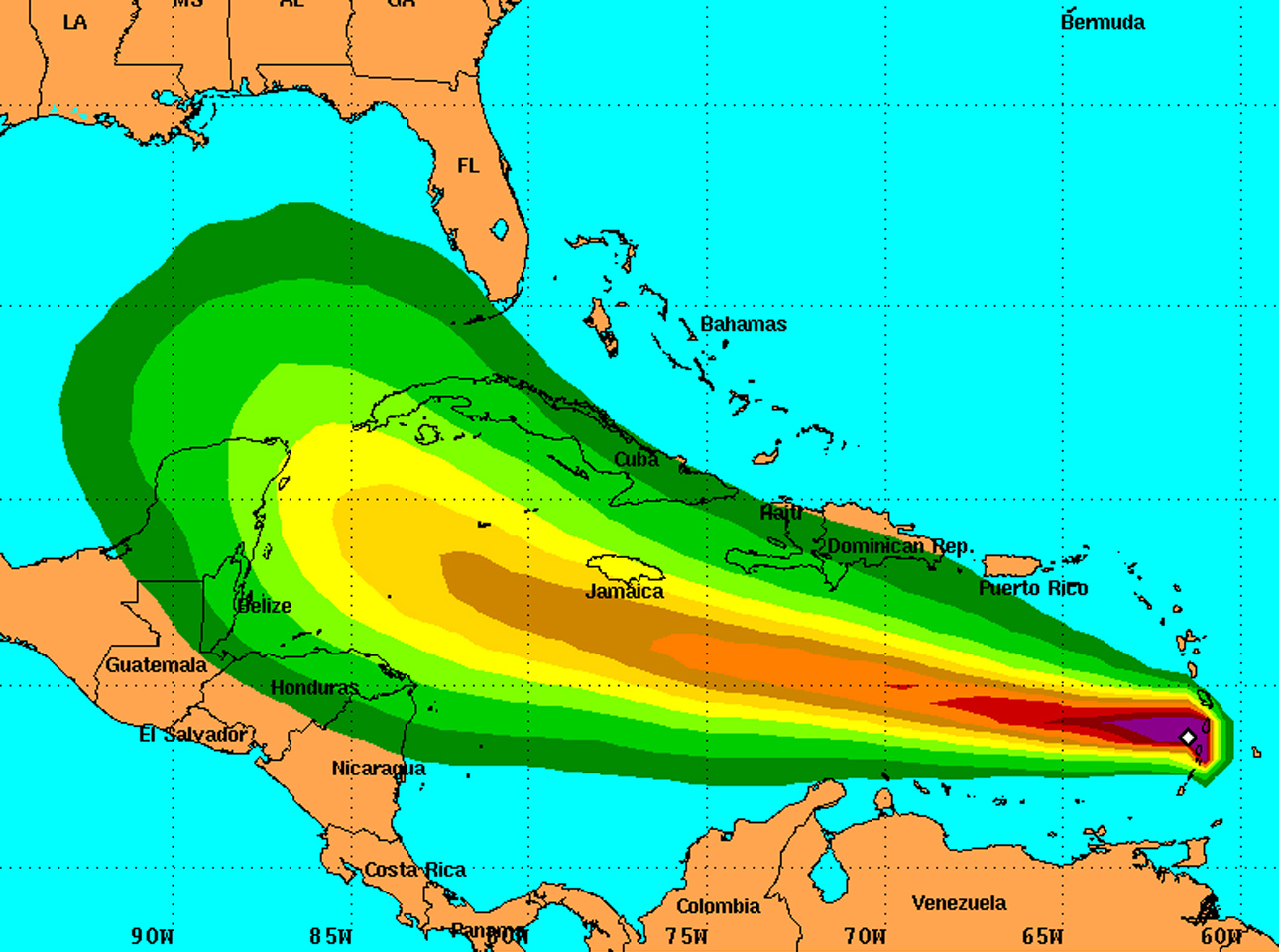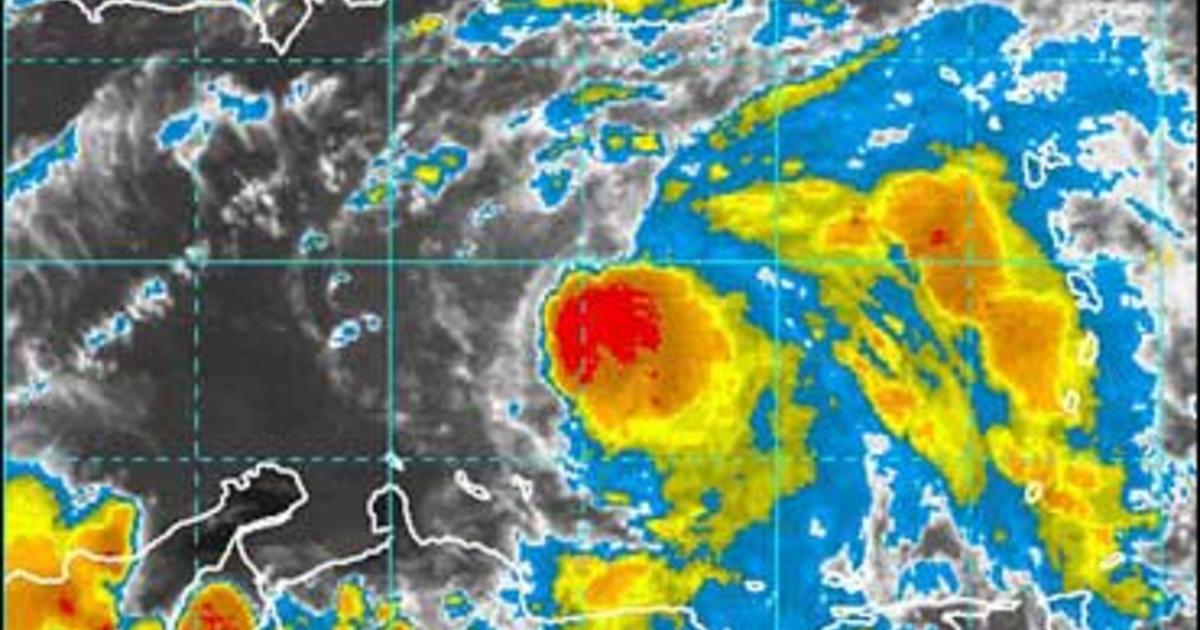Tropical Storm Ernesto’s Formation and Development: Tropical Storm Ernesto Hurricane

Tropical Storm Ernesto, a significant weather event, formed in the Atlantic basin in 2006, showcasing the dynamic nature of tropical cyclone formation and development.
Ernesto’s Formation
Ernesto’s genesis can be traced back to a tropical wave that emerged off the coast of Africa on August 29, 2006. This wave, characterized by a cluster of thunderstorms and a low-pressure area, moved westward across the Atlantic, gradually intensifying as it interacted with favorable atmospheric conditions.
The primary factors contributing to Ernesto’s formation were:
* Warm Sea Surface Temperatures: The tropical wave encountered warm ocean waters, providing the necessary heat and moisture for the development of thunderstorms and the release of latent heat, fueling the storm’s intensification.
* Low Wind Shear: Minimal wind shear, a difference in wind speed and direction at different altitudes, allowed the storm’s thunderstorms to organize and strengthen, forming a central core of circulation.
* Pre-existing Disturbance: The tropical wave was already a pre-existing disturbance with a well-defined area of low pressure, providing a foundation for the development of a tropical cyclone.
Ernesto’s Development
The tropical wave evolved into a tropical depression on August 31, 2006, as its thunderstorms became more concentrated and a well-defined center of circulation developed. As the depression moved westward, it continued to strengthen, reaching tropical storm status on September 1, 2006.
The National Hurricane Center (NHC) officially named the system Tropical Storm Ernesto, marking the fifth named storm of the 2006 Atlantic hurricane season.
Ernesto’s Track and Intensity Changes
Tropical Storm Ernesto followed a generally westward track across the Atlantic, gradually intensifying as it encountered favorable conditions.
- September 1-2: Ernesto strengthened rapidly, reaching peak intensity as a Category 1 hurricane on September 2, 2006, with maximum sustained winds of 75 mph (120 km/h).
- September 2-3: Ernesto began to weaken as it encountered drier air and increased wind shear. The storm’s track shifted slightly northward, passing just east of the Lesser Antilles.
- September 3-4: Ernesto continued to weaken, dropping back to tropical storm status as it moved toward the southeastern United States.
- September 4-5: Ernesto made landfall near the Florida Keys on September 4, 2006, with maximum sustained winds of 50 mph (80 km/h). The storm then moved northward across the Florida peninsula, weakening further as it interacted with land.
- September 5-6: Ernesto emerged over the Gulf of Mexico, regaining some strength as it moved westward towards the Texas coast.
- September 6-7: Ernesto made landfall near Corpus Christi, Texas, on September 7, 2006, with maximum sustained winds of 45 mph (75 km/h). The storm quickly weakened over land and dissipated over western Texas on September 8, 2006.
Ernesto’s Impact
Ernesto’s impact was felt primarily across the Caribbean and the southeastern United States. The storm caused significant damage in the Florida Keys, where it brought heavy rains, high winds, and storm surge.
Ernesto’s track and intensity changes illustrate the complex interplay of meteorological factors that govern the development and behavior of tropical cyclones. The storm’s impact highlights the importance of preparedness and mitigation efforts in coastal regions susceptible to these weather events.
Impacts of Tropical Storm Ernesto

Tropical Storm Ernesto, while not as intense as a hurricane, still had a significant impact on several regions, leaving behind a trail of destruction and disruption. Its effects were felt most acutely in Central America and the Caribbean, where heavy rainfall, strong winds, and storm surge caused widespread damage and displacement.
Impact Regions and Specific Effects
Ernesto’s path primarily affected the Caribbean islands and Central America, bringing heavy rains and strong winds to these regions. The storm’s impact was particularly pronounced in countries such as Haiti, the Dominican Republic, Cuba, and Jamaica. Cities like Port-au-Prince, Santo Domingo, Havana, and Kingston experienced the brunt of the storm’s fury.
Ernesto’s winds, while not hurricane-force, still reached speeds of up to 60 miles per hour, causing damage to infrastructure and uprooting trees. Rainfall was particularly heavy, leading to widespread flooding and landslides, especially in mountainous areas. The storm surge, while not as severe as with hurricanes, still caused coastal erosion and damage to coastal communities.
Anecdotes and Personal Experiences
Many individuals who experienced Ernesto’s wrath shared their stories of the storm’s impact. A resident of Port-au-Prince described the relentless rain as “like a waterfall” that flooded their home and destroyed their belongings. Another resident of Santo Domingo spoke of the fear they felt as the wind howled and trees swayed violently, fearing for their safety.
Economic and Social Consequences, Tropical storm ernesto hurricane
The economic and social consequences of Ernesto were significant, particularly in the affected countries. The damage to infrastructure, including roads, bridges, and power lines, disrupted transportation and communication networks, hindering recovery efforts. The agricultural sector was also severely impacted, with crops being damaged by flooding and high winds, leading to food shortages and economic losses. The storm also resulted in displacement and loss of livelihoods for many individuals, further exacerbating existing social challenges.
Response and Recovery Efforts

The impact of Tropical Storm Ernesto was not only felt in the immediate aftermath of the storm but also in the subsequent response and recovery efforts. Governments and communities alike played crucial roles in mitigating the damage and supporting those affected.
Preparedness Measures
In anticipation of Ernesto’s arrival, governments and communities across the affected regions implemented a range of preparedness measures to minimize the potential impact of the storm. These measures included:
- Issuing timely and accurate weather forecasts and warnings to the public through various channels, such as television, radio, and social media.
- Activating emergency response plans and mobilizing emergency personnel, including first responders, medical teams, and search and rescue units.
- Establishing evacuation centers and providing transportation for vulnerable populations, such as the elderly, people with disabilities, and those residing in low-lying areas.
- Securing critical infrastructure, such as power grids, communication networks, and transportation systems, to prevent disruptions during the storm.
- Stocking up on essential supplies, including food, water, medicine, and shelter materials, in anticipation of potential disruptions to supply chains.
Emergency Response Efforts
The emergency response efforts during and after Tropical Storm Ernesto were crucial in saving lives and minimizing damage. These efforts included:
- Conducting search and rescue operations to locate and assist individuals trapped or injured in the storm’s aftermath.
- Providing medical care to those injured or experiencing health complications due to the storm.
- Distributing food, water, and other essential supplies to those who had lost access to basic necessities.
- Restoring power and communication networks to affected areas, enabling access to vital information and services.
- Clearing debris and damaged infrastructure to facilitate access and transportation.
Challenges in Providing Aid and Relief
The provision of aid and relief to affected populations following Tropical Storm Ernesto presented a number of challenges, including:
- The widespread damage to infrastructure, including roads, bridges, and communication networks, hindering access to affected areas.
- The displacement of populations, requiring temporary shelter and basic necessities for those who had lost their homes.
- The logistical challenges of coordinating and distributing aid to a large number of people spread across a wide area.
- The potential for disease outbreaks due to unsanitary conditions and lack of access to clean water.
Long-Term Recovery Efforts
The long-term recovery efforts following Tropical Storm Ernesto focused on rebuilding infrastructure, supporting communities, and promoting resilience to future storms. These efforts included:
- Reconstruction of damaged homes, businesses, and infrastructure, using resilient materials and designs to withstand future storms.
- Provision of financial assistance and support services to help individuals and communities rebuild their lives.
- Implementation of community-based programs to address the social and economic impacts of the storm.
- Strengthening disaster preparedness plans and early warning systems to improve the response to future events.
Tropical storm ernesto hurricane – Dek, hati-hati jo, badai Ernesto tu lah lupo. Tapi, ado lah hiburan sikok, sambil-sambil ngelak hujan, marilah kite tengok powerball tonight ! Moga-moga lah rezeki kite, menang gede, bisa lah beli payung baru kalau badai datang pulak. Kito doakan lah, semoga badai Ernesto cepat berlalu, dan langit kembali cerah.
Tropical Storm Ernesto, although not a hurricane, still brought strong winds and heavy rains. While we were busy securing our homes, folks were probably wondering where was the powerball won last night ! But once the storm passed, it was back to life as usual, and everyone was relieved to be safe and sound.
